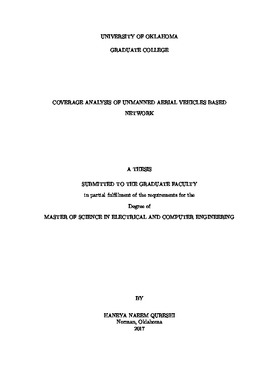| dc.description.abstract | Unmanned Aerial Vehicle (UAV) based cellular deployment research has recently gained significant attention due to its ability to overcome certain limitations of both terrestrial and satellite networks. However, most studies on the topic analyze key UAV deployment parameters, such as coverage radius and altitude while omitting or over-simplifying an important piece of UAV deployment puzzle, i.e., effect of a realistic antenna pattern. This thesis addresses the UAV deployment problem while using a realistic 3D directional antenna model and analyses the new tradeoffs between key UAV deployment parameters that emerge only when a realistic antenna model is used. The focus of this study is to identify and analyze the various UAV deployment design options after adding a new dimension of beamwidth to the UAV deployment design space. The extensive numerical results, cross validated with simulations reveal many new insights that can be crucial in practical deployments but cannot be examined with existing simplified models. Through quantitative comparison of coverage to deployment parameter sensitivity, it is shown how beamwidth may be a more feasible parameter to design optimal coverage as compared to height optimization proposed in prior literature. Moreover, the significance of optimizing both antenna beamwidth and UAV altitude in tandem with each other, rather than independently is established. Extending analysis to multiple UAVs, a hexagonal packing scheme to optimize number of UAVs needed to cover a given area is proposed. The results are compared with what was obtained by circle packing theory in prior literature. The comparison uncovers several advantages the proposed approach offers as compared to circle packing based UAV deployment. | en_US |
